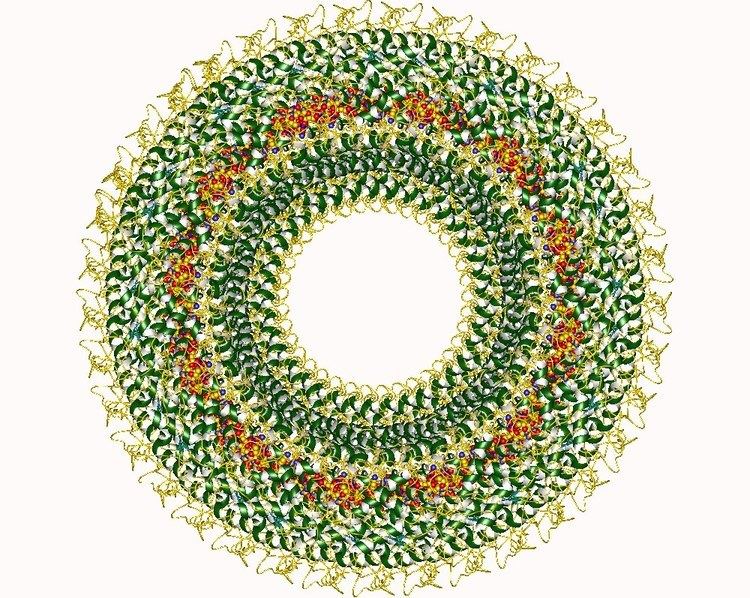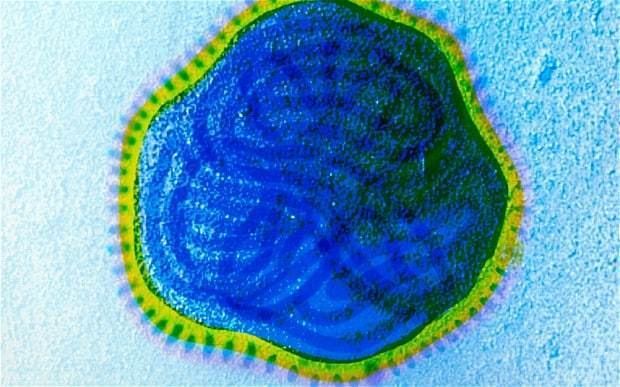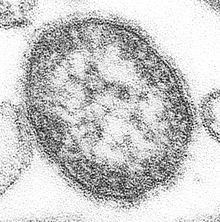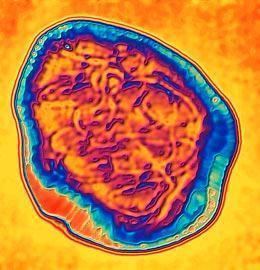Rank Species | ||
 | ||
Similar Morbillivirus, Vaccinia virus, Sendai virus, Coxsackievirus, Rhabdoviridae | ||
Vaccines an unhealthy skepticism measles virus outbreak 2015 retro report
Measles virus (MeV) is a single-stranded, negative-sense, enveloped (non-segmented) RNA virus of the genus Morbillivirus within the family Paramyxoviridae. Humans are the natural hosts of the virus; no animal reservoirs are known to exist.
Contents
- Vaccines an unhealthy skepticism measles virus outbreak 2015 retro report
- Dr giatri dave discusses the measles virus
- Disease
- Entry
- Evolution
- Genotypes
- References

Dr giatri dave discusses the measles virus
Disease

The measles virus is the cause of measles, an infection of the respiratory system. Symptoms include fever, cough, runny nose, red eyes and a generalized, maculopapular, erythematous rash. The virus is highly contagious and is spread by coughing and sneezing via close personal contact or direct contact with secretions.
Entry

The measles virus has two envelope glycoproteins on the viral surface—hemagglutinin (H) and membrane fusion protein (F). These proteins are responsible for host cell binding and invasion. Three receptors for the H protein have been identified to date: complement regulatory molecule CD46, the signaling lymphocyte activation molecule (SLAM) and the cell adhesion molecule Nectin-4.
Evolution

The measles virus evolved from the formerly widespread rinderpest virus, which infects cattle. Sequence analysis has suggested that the two viruses most probably diverged in the 11th and 12th centuries, though the periods as early as the 5th century fall within the 95% confidence interval of these calculations.

Other analysis has suggested that the divergence may be even older because of the technique's tendency to underestimate ages when strong purifying selection is in action. There is some linguistic evidence for an earlier origin within the seventh century. The current epidemic strain evolved at the beginning of the 20th century—most probably between 1908 and 1943.
Genotypes

The WHO currently recognises 8 clades of measles (A–H). Subtypes are designed with numerals—A1, D2 etc. Currently a total of 23 subtypes are recognised. The sequencing of the 450 nucleotides that code for the C‐terminal 150 amino acids of N are the minimum amount of sequence data required for genotyping a measles virus isolate. The genotyping scheme was introduced in 1998 and extended in 2002 and 2003.
Despite the variety of measles genotypes, there is only one measles serotype. Antibodies to measles bind to the haemagluttinin protein, therefore antibodies against one genotype (such as the vaccine strain) are protective against all other genotypes.
The major genotypes differ between countries and restatus of measles circulation within that country or region. Indigenous transmission of measles virus was interrupted in the United States and Australia by 2000 and the Americas by 2002.
